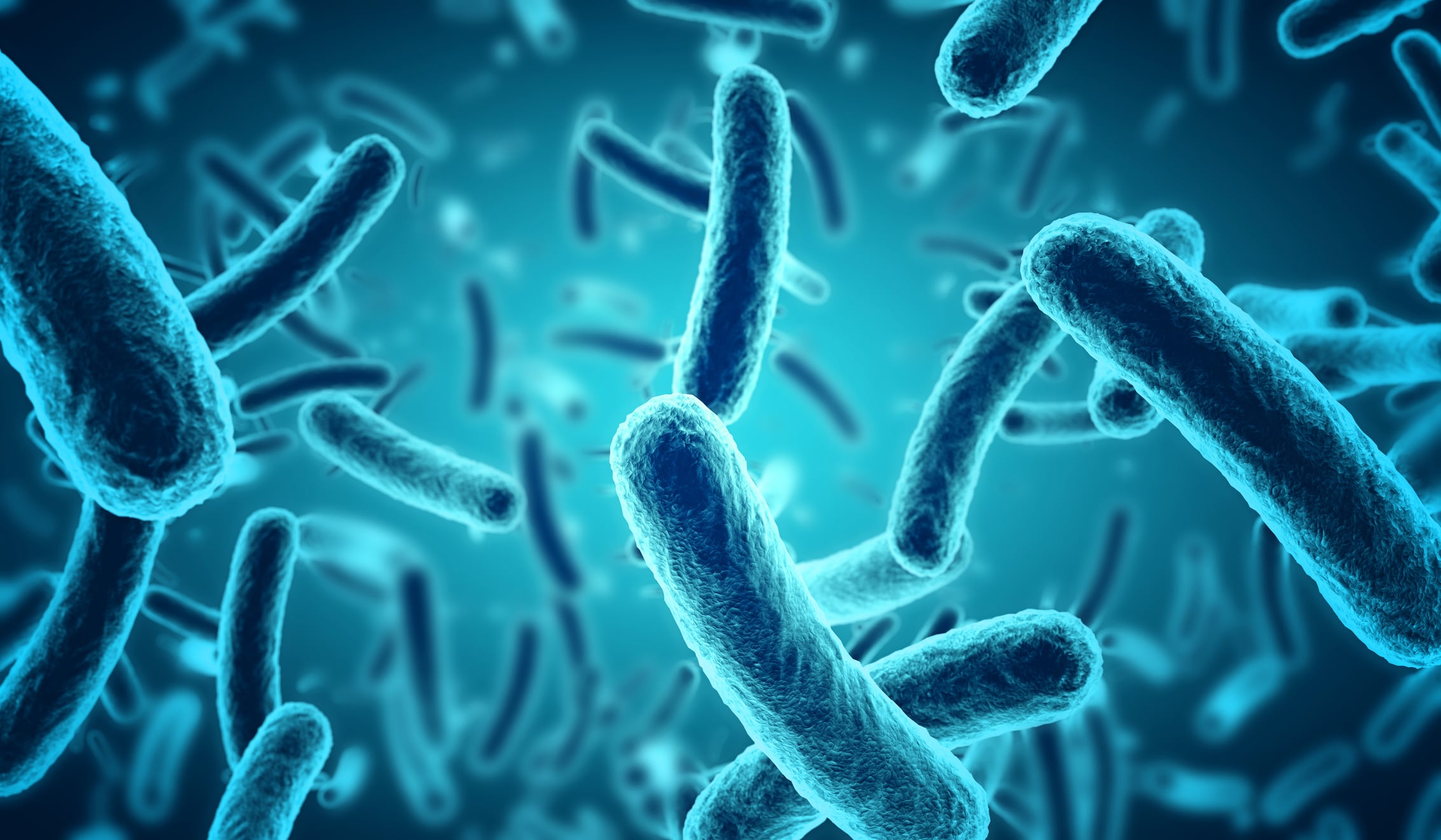The symposium was sponsored by Danone Nutricia and Yakult. Despite being called the Harvard Probiotics Symposium, there was relatively little discussion of probiotics, with the main focus on the state of the science around the microbiome across the lifespan.
The event opened with a presentation by Dr Jeff Gordon, who also received the first ever Excellence in Research Award from the Global Probiotics Council.
“The public is captivated [by the microbiome and probiotics],” he said, “and as such there is a need for people in this field to describe their findings carefully and seriously.”
During his subsequent keynote address, Dr Gordon described work with malnourished children in Bangladesh and the potential of “microbiota-directed foods” or MCDF to mitigate the physiological, metabolic and immunologic features associated with malnourishment.
This work was based on the hypothesis that the human gut microbiota is a microbial organ with characteristics stages of development, and that disruption of this development process is related to the pathogenesis of undernutrition.
Dr Gordon presented a preclinical proof of concept that microbiota immaturity is causally related to malnutrition using phenotypic transmission to germ-free mice. A study published in Science showed that a subset of “age-discriminatory” strains are “growth-discriminatory”, and that one time administration of a cultured consortium of age/growth discriminatory strains prevented the stunting in growth that was seen when mice were given microbiota from stunted/underweight infants.
The question then becomes is it possible to repair microbiota immaturity in children? Data from trials in Mirpur, Bangladesh in children with MAM (moderate acute malnutrition) led Dr Gordon and his team to identify one MCDF with potential, but he was reluctant to share more at this stage.
Gut health and inflammation
Prof Charles Mackay from Monash University how bacterially-produced short chain fatty acids (SCFAs) like acetate can impact inflammation. Data from animal studies, for example, shows that fiber and acetate can decrease inflammation in disease models
Prof Mackay’s group has explored the potential of high amylose starch (HAMS) with acetate or butyrate encapsulated in them. Data published in Nature Immunology (Marino et al. 2017) showed that both provided a high degree of protection from diabetes. “Feeding mice a combined acetate- and butyrate-yielding diet provided complete protection, which suggested that acetate and butyrate might operate through distinct mechanisms,” wrote the paper’s authors.
Another paper by Prof Mackay’s group showed that Acetate or high fiber consumption by pregnant mice alters gene expression in the developing fetal lung, which could have implications for asthma (Thorburn et al. 2015, Nature Communications).
Data was also presented that showed a link between the gut microbiota and heart health, with a 2017 paper in Circulation indicated that a high-fiber led to favorable changes in the gut microbiota linked to protection against cardiovascular disease.
“The favorable effects of fiber may be explained by the generation and distribution of one of the main metabolites of the gut microbiota, the short-chain fatty acid acetate,” wrote Prof Mackay and his team. “Acetate effected several molecular changes associated with improved cardiovascular health and function.”
Challenging the sterile womb theory

Prof Mackay was followed by Dr Erika Isolauri from the University of Turku, who explained how our thinking of the initial inoculum has changed, and that the placenta may be colonized by bacteria and not sterile.
“We agree that dysbiosis early in life leads to non-communicable disease risk, including allergy and obesity,” she said. “Looking at maternal obesity, two in three women are obese or overweight during pregnancy, and this impacts epigenetics, microbiome, inflammation, and placental nutrient delivery.”
A 2012 paper in Cell co-authored by Dr Isolauri showed that the gut microbiota of pregnant women dramatically changed from the first to third trimesters, and when the third trimester microbiome was transferred to germ-free mice the mice got fatter and exhibited insulin insensitivity compared to mice inoculated with the first trimester microbiome.
The microbiome and Celiac Disease
Harvard Medical School’s Dr Alessio Fasano explained that the first ever case of Celiac Disease (CD) was in 1938, and at that times it was almost exclusively children diagnosed with a very high rate of mortality. “It is no longer considered a sensitivity,” he said. “It’s an autoimmune disease.”
The prevalence of CD is doubling every 15 years, and that there is data to indicate a role for the gut microbiome.
“We’re changing the environment too quickly for humans to adapt,” he noted. “Human plus environment plus increased gut permeability plus immune response plus microbiome gives you a clinical outcome.
“There is a shift in paradigm from focusing on gluten to looking at the microbiome,” added Dr Fasano.
He went on to explain that infants genetically predisposed to CD are characterized by a low abundance of Bacteroidetes combined with abundance of Firmicutes, and an abrupt decrease in Lactobacilli during the pre-clinical phase of CD.
So could we identify a target for a potential intervention? “The single biggest factor impacting the microbiome is nutrition,” he said. “We get sick every now and again, we use antibiotics every couple of years, but we eat 3 times a day…”
Metagenomics may provide the answers to many of these questions, said Dr Fasano, because it shows you which pathways are involved.
“The game is played during those first 1,000 days and if we know the game we can change how it is played.”
Developed vs developing worlds
Dr Erwin Zoetendal from Wageningen University & Research in the Netherlands then took the discussion into adults with a world tour looking at how the intestinal microbiota in developed countries compares with those in developing countries.
A 2012 paper published in Nature (Yatsunenko et al.), for example, showed that there is significantly lower microbiota richness in inhabitants of USA metropolitan areas compared with Amerindians from the Amazonas of Venezuela and residents of rural Malawian communities.
Data from Italy and Burkina Faso (De Filippo et al., 2010, PNAS) revealed that children in the African nation had dramatically different gut microbiomes to Italian children (see figure below), leading the authors to hypothesize that, “gut microbiota coevolved with the polysaccharide-rich diet of [Burkina Faso] individuals, allowing them to maximize energy intake from fibers while also protecting them from inflammations and noninfectious colonic diseases.”
A 2017 paper by Smits et al (Science) showed that there is a gradient from developed to developing countries across the world.
“[T]hese data indicate the microbiota of many urbanized people is characteristic of a diet limited in the plant-derived complex carbohydrates that fuel gut microbiota metabolism and maintain resident bacterial populations,” wrote Smits et al. “Numerous other factors associated with industrialization could also be affecting the microbiota of people from higher-income countries.
“The challenge is to understand the importance of the ecological role and functional contributions of species with which humans coevolved but that are now apparently underrepresented or missing in industrialized populations.”
The rise of fermented foods

The Harvard symposium also featured a presentation by Dr Robert Hutkins from the University of Nebraska on fermented foods, who literally wrote the book on the topic (the second edition of Dr Hutkins’ Microbiology and Technology of Fermented Foods will be available in November 2018).
Fermented foods such as kimchi and sauerkraut are garnering increasing attention among consumers. Dr Hutkins explained that there are different ways of introducing microbes into fermented foods:
1. Backslopping: this relies on a previous batch, uses “wild” microbes. An example of this is Kefir, which is produced by Kefir grains, which are casein with cultures inside
2. Starter cultures, like a yogurt
3. Natural or spontaneous fermentation. Kimchi and sauerkraut are examples of this.
However. fermented foods are not the same as probiotics because fermented foods contain cultures that are often undefined and non-characterized, but they share similar properties.
“The challenge for fermentation-associated microbes is that, as transients, some are not prepared to make the trip,” he said. “Do they get there? For the most part yes, albeit at lower levels.” For example, there is data showing that sauerkraut and sausage bacteria can be found alive in the colon.
The elderly
The final set of presentation focused on the elderly, and aimed to answer four key questions:
1. Are disorders accompanied by altered gut microbiota or/and metabolites & can we prevent/reverse them?
2. Are gut microbiota important for immunosenescence?
3. Are the deleterious effects of gut microbiota due to genetics or the environment?
4. Can we use our knowledge about gut microbiota to help treat (prevent) diseases?
First up was Paul O’Toole, Professor of Microbial Genomics at University College Cork. Data from his group shows that when people move from free-living community to long-term residential care their microbiota changes over the course of six months.
The lack of dietary diversity in long-term residential care leads to a decrease in microbiota diversity associated with inflammation and frailty, he noted, but is there a direct correlation and can we modulate the gut microbiota by diet in the elderly?
His team designed a prebiotic supplement by blending a range of ingredients, including polydextrose, GOS, corn fiber, wheat dextrin, and so on. Preliminary data showed that, while prebiotic intervention didn’t alter microbiota diversity after 26 weeks, some taxa were differentially abundant between time points within treatment groups. In addition, there was a trend toward reduced inflammatory markers.
Dr Simin Meydani from Tufts University then looked at the similarities between aging and obesity. In both instances, you see an imbalance between higher inflammation and an impaired innate immune response and decreases in T-cell mediated function, she said.
“Obesity impairs T-Cell proliferation and increases serum pro-inflammatory cytokines giving an “old-like” phenotype,” said Dr Meydani.

The final presentation was given by Claire Steves, PhD, who discussed data from the TwinsUK studies. Data published in Twin Research and Human Genetics (2016) showed a variance in aging trajectories that are substantially environmental.
Dr Steves also summarized findings that were published in Genome Medicine (2016), which revealed that there are signatures in the gut microbiota of early frailty.
“We have identified a number of associations between host frailty and the gut microbiota, including modest associations with specific taxonomic abundances and a striking negative association with microbiota diversity,” wrote the paper’s authors.
“Although more work is required to delineate the direction of effect between frailty and the composition of the gut microbiota, we believe that the associations we have described here provide motivation and direction for such studies. They also provide microbial targets for future investigation, with the ultimate goal to develop the capability to rationally modulate the gut microbiome to improve health in ageing people.”


